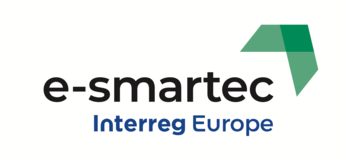On May 5, 2021, e-smartec partner Lazio Region organised a hands-on training on the application of marketing techniques for mobility planning.
The event targeted 60 participants who work at Lazio Region’s Department of Mobility, Roma Servizi per la Mobilità, as well as multiple municipalities of the Region and the Metropolitan area of Rome.
Knowing the (potential) attendees
 Most of the participants are active in mobility and urban planning, and have a background in engineering, architecture, and economics. In addition, most of them have already worked on SUMPS and on participation planning, but did not have experience with marketing techniques.
Most of the participants are active in mobility and urban planning, and have a background in engineering, architecture, and economics. In addition, most of them have already worked on SUMPS and on participation planning, but did not have experience with marketing techniques.
The attendees were extremely interested in the hands-on training and wished to learn more about the SUMP using marketing techniques’ perspective, especially when they realised that they had already implicitly used both marketing techniques and engagement methods in their work with SUMPs.
It is also interesting to notice that ice-breaking survey showed that 70% of the participants saw understanding people’s transport choices as the main objective of SUMPs, while 30% saw the decrease of traffic and congestion as such.
2 groups, one challenge
 The final number of attendees was 22: participants were divided into 2 groups, each of them supported by 1 main facilitator and 1 supporting facilitator.
The final number of attendees was 22: participants were divided into 2 groups, each of them supported by 1 main facilitator and 1 supporting facilitator.
The two training groups used the example of Ravenna (Italy) as their working exercise.
Group A focused on the following macro-strategic policy objectives of the Region:
- Enhancing the pedestrian area of the historic centre
- Expanding the ZTL of the historic centre
- Increasing the cycle paths
- Decreasing car travel and increase intermodality between public and private transport

Group B decided to develop its fictitious SUMP in a post COVID-19 era, with the idea and possibility of being able to organize events and meetings in presence.
The macro-strategic policy objectives of the Region selected were:
- Increasing the total of the cycling and the cycling path
- Decreasing car travel
- Escalating the intermobility between private and public transportation.
Feedback
In the end, all participants did give positive feedback on the training.
You can read our press release here!

